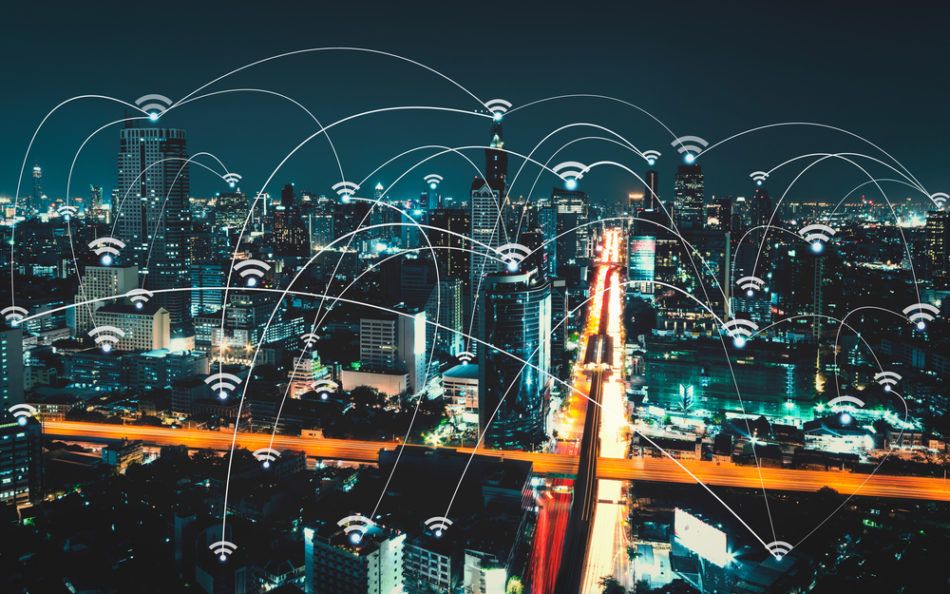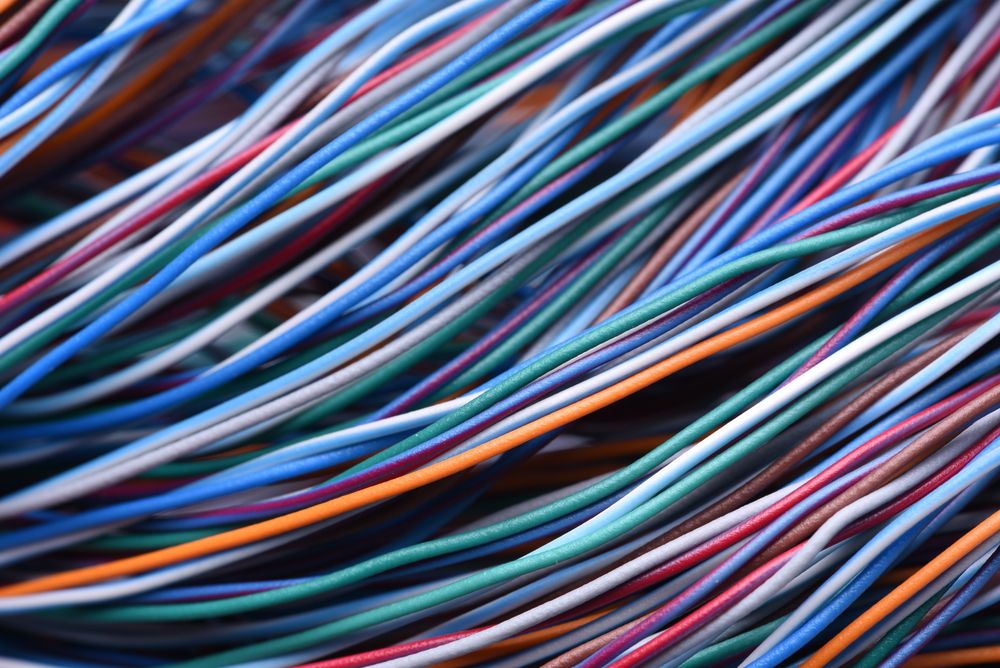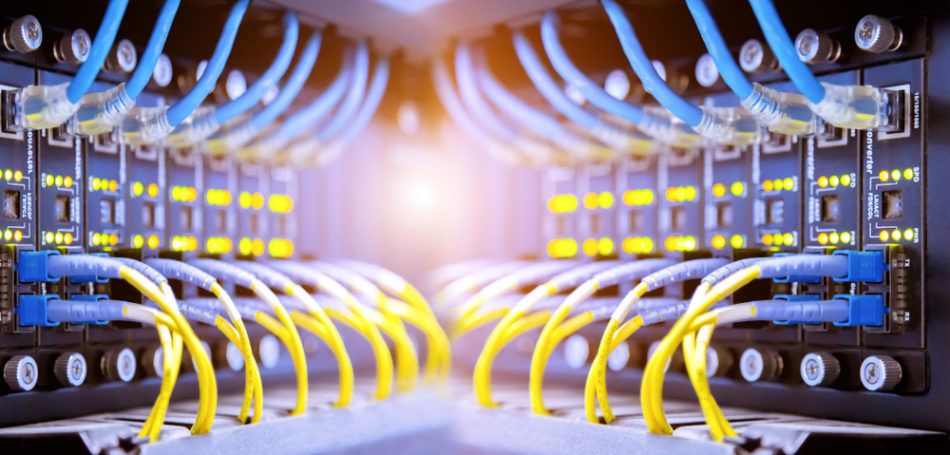WiFi 6 Is Coming and Enterprises Need to Think About Cabling
WiFi 6 promises to improve wireless speeds, but obsolete cabling could place a bottleneck on your network. WiFi 6 — previously known as 802.11ax — is...
4 min read
 Kevin Murphy
:
Apr 1, 2019 6:27:00 AM
Kevin Murphy
:
Apr 1, 2019 6:27:00 AM
Enterprises seeking high-performing networks can’t afford to ignore their network cabling, as this oft-overlooked networking component is a critical part of achieving reliable connectivity.
Cabling represents one of the most fundamental components of network design. Switches, routers, and access points may get all the attention, but if your cabling infrastructure isn’t well-maintained, well-organized, and capable of carrying the workloads the rest of the network components are generating, it could quickly become your network’s weakest link. Like trying to drive an AMG around a go-kart track, your brand new switches probably won’t do you much good if they’re pushing data through 20-year-old copper cabling.
With the jump from WiFi 5 to WiFi 6 (802.11ax) on the horizon, it has never been more important for organizations to get their cabling in order. Many companies are already starting to prepare for WiFi 6 by upgrading their access points, but those expensive new components won’t be able to deliver on their potential without a cabled infrastructure capable of supporting them. If you’re ready to bring your network up to speed, here’s what you need to know.
Cabling has long been one of the most overlooked parts of enterprise networking. It’s also one of the most crucial foundations for providing the connection speed and reliability the devices of the future will demand.
Many enterprises run much of their wired infrastructure on Category 5 or Category 6 cables. The difference between the various categories of cable lies in their bandwidth and transmission speeds:
The most notable difference between Category 6 and Category 6A cables is their capacity for longer-distance transmission. Cat6A can support 10 Gigabit Ethernet at 100 meters, while Cat6 can only transmit at those speeds at up to 37 meters. Generally speaking, ensuring optimal performance for WiFi 6 network components will call for Category 6 cabling at a minimum, with Category 6A being ideal— so why are most organizations still using Cat5 and Cat5E cables?
Cost is the primary reason why so many organizations continue to use outdated Cat5 and Cat5E cables. But while Cat5 cables require less upfront investment, in the long run, they tend to deliver a smaller ROI than Cat6 cables.
Tracking the “dollars per decibel” metric can help clarify an organization’s ROI on cabling upgrades. In most cases, Category 6 cabling will deliver higher performance at a lower cost per decibel than Category 5e cabling. Here’s a scenario to illustrate why:
As one industry expert puts it, “Always put in too much cabling; it never will be enough. Because the system will only be as strong as the weakest link, put in the highest quality cabling, components, and hardware.”
Consider this: 70% of network downtime can be attributed to poor cabling infrastructure, including bad wiring, terminations, and connections. The loss of performance referenced in the first scenario above can have a massive impact on a company’s bottom line. Businesses that think they need to upgrade their hardware, access points, or software because their network is experiencing slowdowns could end up wasting substantial sums of money when they should really just upgrade their cabling.
Of course, for many companies, the significant upfront expense (and network downtime) required to do a full “rip and replace” can make a cabling upgrade a non-starter. For this reason, many enterprises are turning to Smart Rate to help bridge the gap between completely replacing their cabling and getting the performance they need for the transition to WiFi 6.
In short, Smart Rate allows businesses to get improved performance out of their old infrastructure — but only in some cases. Smart Rate Switches are scalable Ethernet switch interfaces that enable data transmission rates of up to 10Gbps over Category 5 cabling. Using Smart Rate Switches will enhance network performance and speed while supporting high volumes of user devices and activity — all without having to upgrade any cabling.
However, Smart Rate doesn’t solve the underlying issues presented by outdated cabling or guarantee that your wired infrastructure will be able to withstand the next evolution in network performance beyond WiFi 6. In some cases, it will be more costly and more of a hassle than simply ripping out your existing cabling and replacing it with new cabling.
Network cabling is a big issue, and it’s only going to get bigger as enterprise networks continue to evolve in the coming years. A general lack of knowledge around the costs and benefits of cabling can result in networks’ performing worse than they otherwise should.
The benefits that next-gen networking technologies could deliver are substantial — capturing these benefits, however, is no simple task. Whether it’s Smart Rate, rip and replace, or a stopgap upgrade, the reality is that many enterprises need to address their cabling issues — and fast. For this reason, it’s often prudent for enterprises to secure the expertise of a cabling specialist like Turn-key Technologies (TTI).
With three decades of experience managing cabling installations and upgrades for some of the largest enterprises in America, the experts at TTI bring the know-how and cabling technology necessary to ensure your network is running on a powerful foundation. To find out if your network has the “juice” it needs to deliver peak performance, consider undergoing a comprehensive network assessment.
If your enterprise requires the services of an experienced partner for installation, consolidation, troubleshooting, or network cleanup, TTI is here to help.

WiFi 6 promises to improve wireless speeds, but obsolete cabling could place a bottleneck on your network. WiFi 6 — previously known as 802.11ax — is...

A network upgrade usually means faster network speeds, but if you’ve forgotten to invest in updated structured cabling, those speeds might be out of...

As enterprises prepare for Wi-Fi 6, now’s the time to decide whether to rip and replace your existing cabling or invest in solutions designed to get...